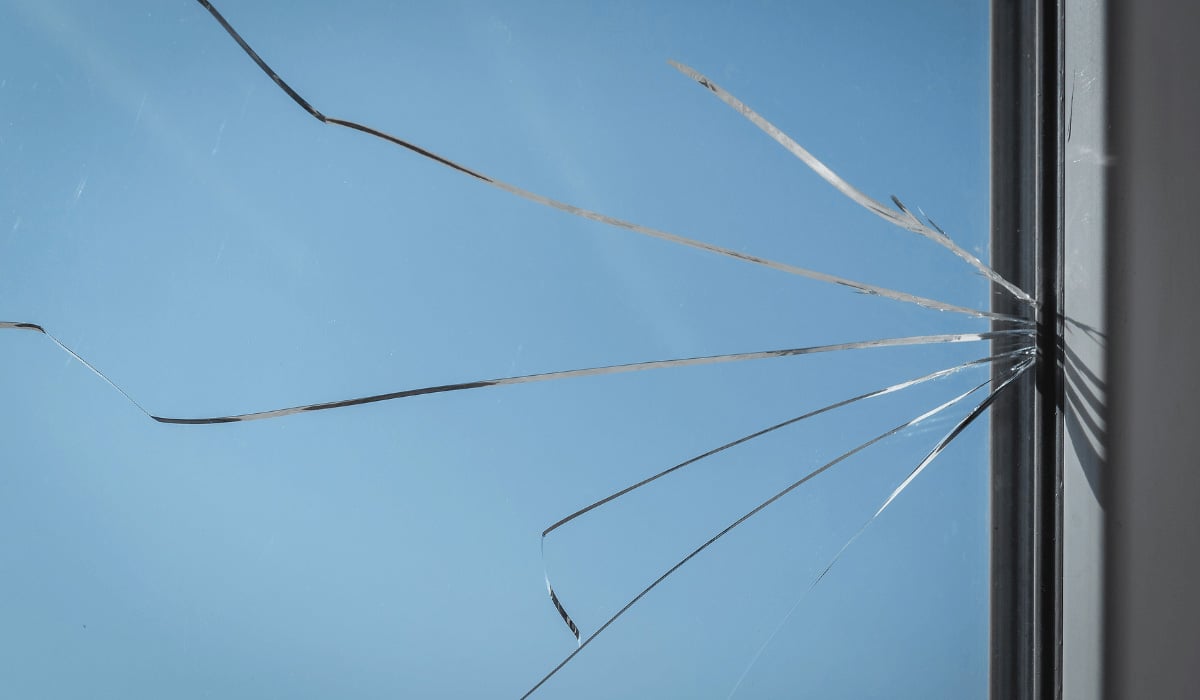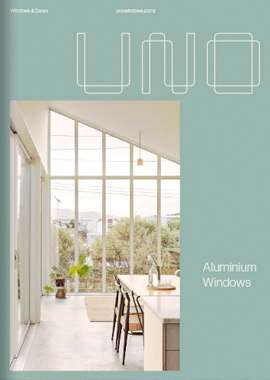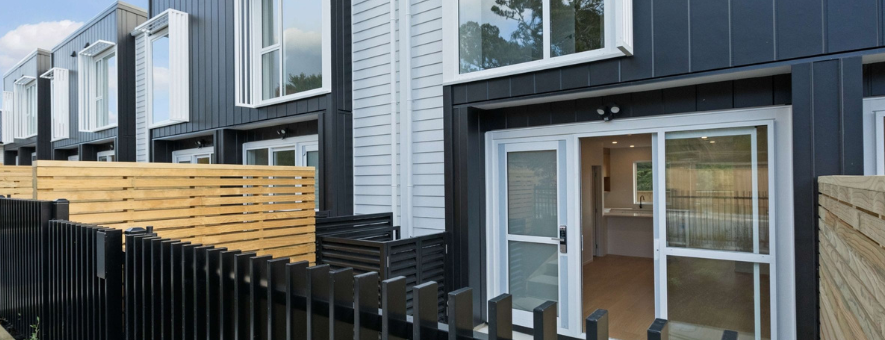When choosing windows for your next project, you must consider their strength -- especially regarding cracks and breaks.
In this article, we explain what thermal stress breaks are, what causes them, and how to minimise the risk in your next project. We also cover various glass types and the factors that influence their strength.
What is thermal stress?
Thermal stress is strain created in an object due to temperature fluctuations. When the object is heated or cooled, it expands and contracts. The more extreme the temperature difference, the higher the thermal stress.
In a window, thermal stress is when different parts of a glass pane have varying temperatures, which can cause spontaneous glass breakage.
What is thermal stress glass breakage?
A thermal stress break happens when thermal stress exceeds the glass strength. When this happens in certain types of glass, the centre becomes hotter than the edge, causing the centre of the glass to expand. This will usually lead it to crack under the pressure.
One of the main causes is the absorption of heat from the sun. The section of glass exposed to the sun will absorb the heat while any shaded part will stay relatively cool. The hot glass expands while the cooler area doesn’t. If the cool area isn’t strong enough to withstand this, thermal stress breakage will occur.
Thermal stress breakage is usually not due to a glass fault but rather environmental conditions. For this reason, it is generally not covered by the glass supplier’s warranty.
What does a thermal stress break look like?
Thermal stress breaks in windows typically appear as a crack or smash. It typically starts at the edge and spreads to the centre.
These breaks can be either low-stress or high-stress:
-
A low-stress break is characterised by a single crack that slowly makes its way across the glass.
-
A high-stress break has an initial crack with several separate fissures branching off.
What causes a thermal stress break?
Several factors can influence thermal stress breaks, including the following:
Glass edge condition
One of the most common causes of low-stress thermal cracking is damage to the glass edge. This can happen during manufacturing or installation, making the edge of the pane more susceptible to thermal breakage.
To minimise the risk of a thermal stress break, glass edges should be clean-cut with no shells, vents, or shark teeth. Poorly cut edges may reduce the glass strength by 50% or more.
Glass type
Each type of glass has a different tolerance to thermal stress, largely determined by how much solar energy it absorbs. The higher the solar energy absorption (EA), the greater the risk of thermal fracture.
What are the strengths of different glass types?
The most common glass types used in windows include annealed glass, tempered glass, and laminated glass.
Annealed glass
The most common glass type is annealed glass (or ‘float glass’), which is used in most residential windows. It is relatively weak and breaks easily.
Tempered glass
Commonly used in commercial and high-traffic areas, tempered glass (or ‘Toughened glass’) is much stronger than annealed glass. Tempered glass has a very high edge strength allowing it to withstand thermal breakage. Tempered glass is also the most common type of safety glass.
Laminated glass
Laminated glass is made from two panes of glass permanently bonded together by a plastic interlayer. Laminated glass is used in areas where safety is a top concern. However, laminated glass is prone to shells on the edge of the pane, which can trigger thermal stress breaks.
Glass size
The larger the pane of glass, the more area is absorbing the sun’s energy. Compared to its relatively cooler edges, this increases the thermal stress at the edges of the glass. Depending on the type of glass, there will be a maximum pane size you can use safely. You can check this with your supplier.
Exterior shading
Shade can lead to thermal stress depending on a combination of its size, shape and location on the glass. This is further complicated by the seasons, as the position of exterior shading changes throughout the year along with the sun.
There are three key guidelines to keep in mind when assessing external shading:
-
Shade covering less than half of the glass induces higher thermal stress.
-
Static shading induces higher thermal stress than mobile shading.
-
Shade with a V or L shape generates higher thermal stress, especially when the point of the V falls on the edge.
Interior shading
Particularly critical in residential construction, internal shade can influence the level of thermal stress on windows. This can occur when curtains or blinds are too close to the glass surface, reflecting heat back onto the glass. You can reduce this by increasing ventilation and ensuring all drapes or blinds are positioned at least 50mm from the glass.
Coatings
The use of Low-E coatings can also increase the solar absorption rate of windows. These coatings are designed to reduce heat transfer to improve energy efficiency. Unfortunately, this also leads to higher glass temperatures and increases the risk of thermal stress.
Window frames
Did you know the frame is just as important as the glass itself? Since uPVC and timber window frames are poor heat conductors, the glass edges take longer to heat up compared to the centre of the glass pane. This increases thermal stress and leads to more breakages. On the other hand, a thermally broken window frame lowers the heat transfer in and out.
What are thermally broken windows?
Thermally broken aluminium windows contain a reinforced polyamide bar separating the outside frame from the inside frame. This creates a continuous insulating barrier that acts as a thermal resistor. This reduces the heat transfer between the interior and exterior of the house, helping to maintain consistency across the pane of glass.
How to manage the risk of thermal stress
You can manage the risk of thermal stress breakage in two ways. Firstly, you can manage the factors outlined above. Secondly, you can use tempered or heat-strengthened glass. Heat strengthening increases the strength of the glass, allowing it to resist thermally induced stress.
While thermal stress breaks are rare, it is important to note that tinting, Low-E coatings, and reflective coatings increase the risk of thermal stress. When opting for these products, it is recommended that a thermal assessment is undertaken first.
So, to keep your installation costs down while still reducing the risk of breakage, we recommend managing the risk with the tips below:
-
Choose thermally-broken window frames
-
Choose dark-coloured window frames
-
Install window treatments with a minimum 50mm wide gap from the glass.
-
Avoid applying stickers or films to glass
-
Get a thermal assessment from your glass supplier
-
Check glass edges are not damaged before glazing
If you’re planning your next project, speak to our experts about how to choose the most suitable glass and window frames. We’ll advise you on how to minimise the risk of breakages, increase energy efficiency, and maximise architectural appeal.




